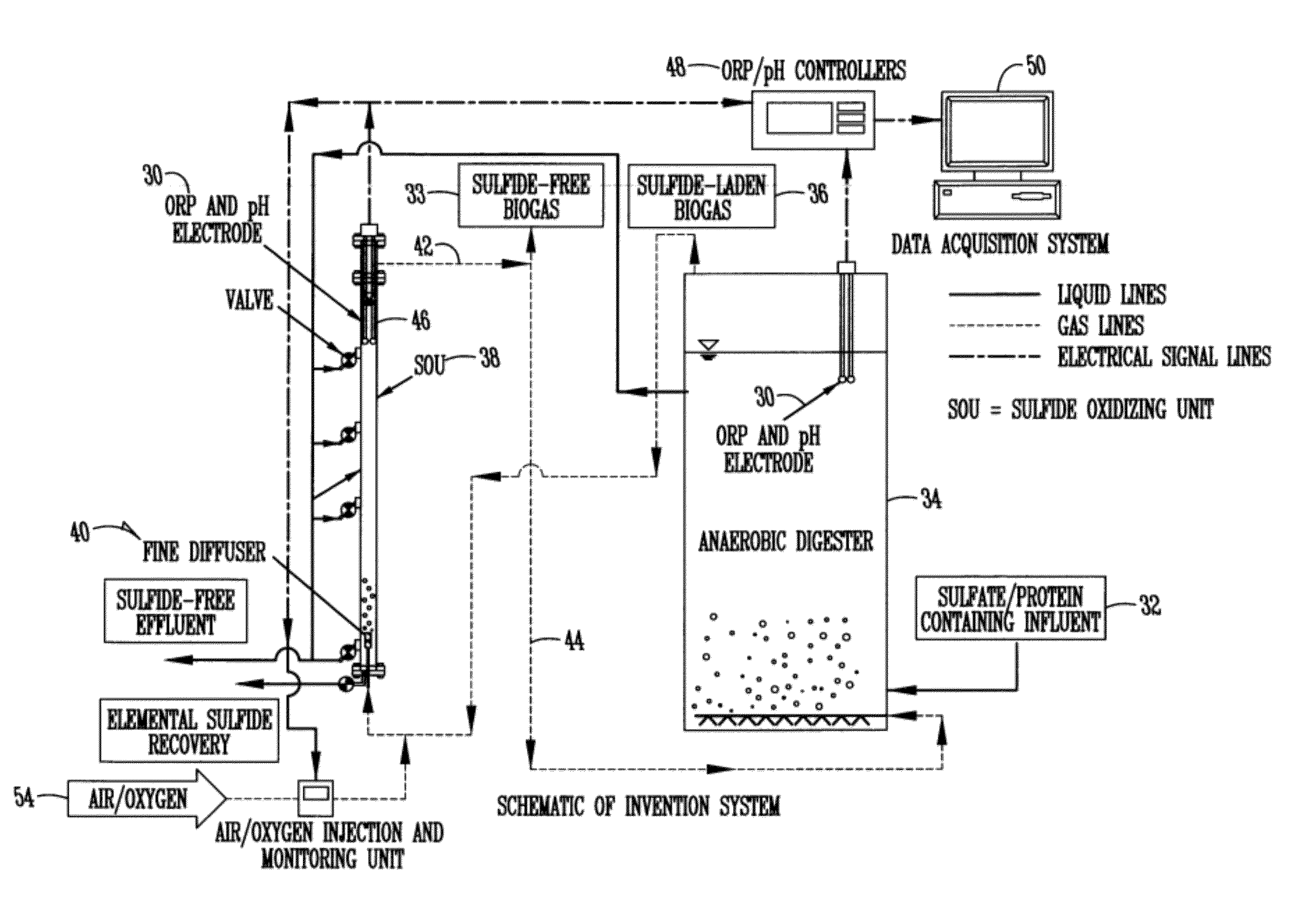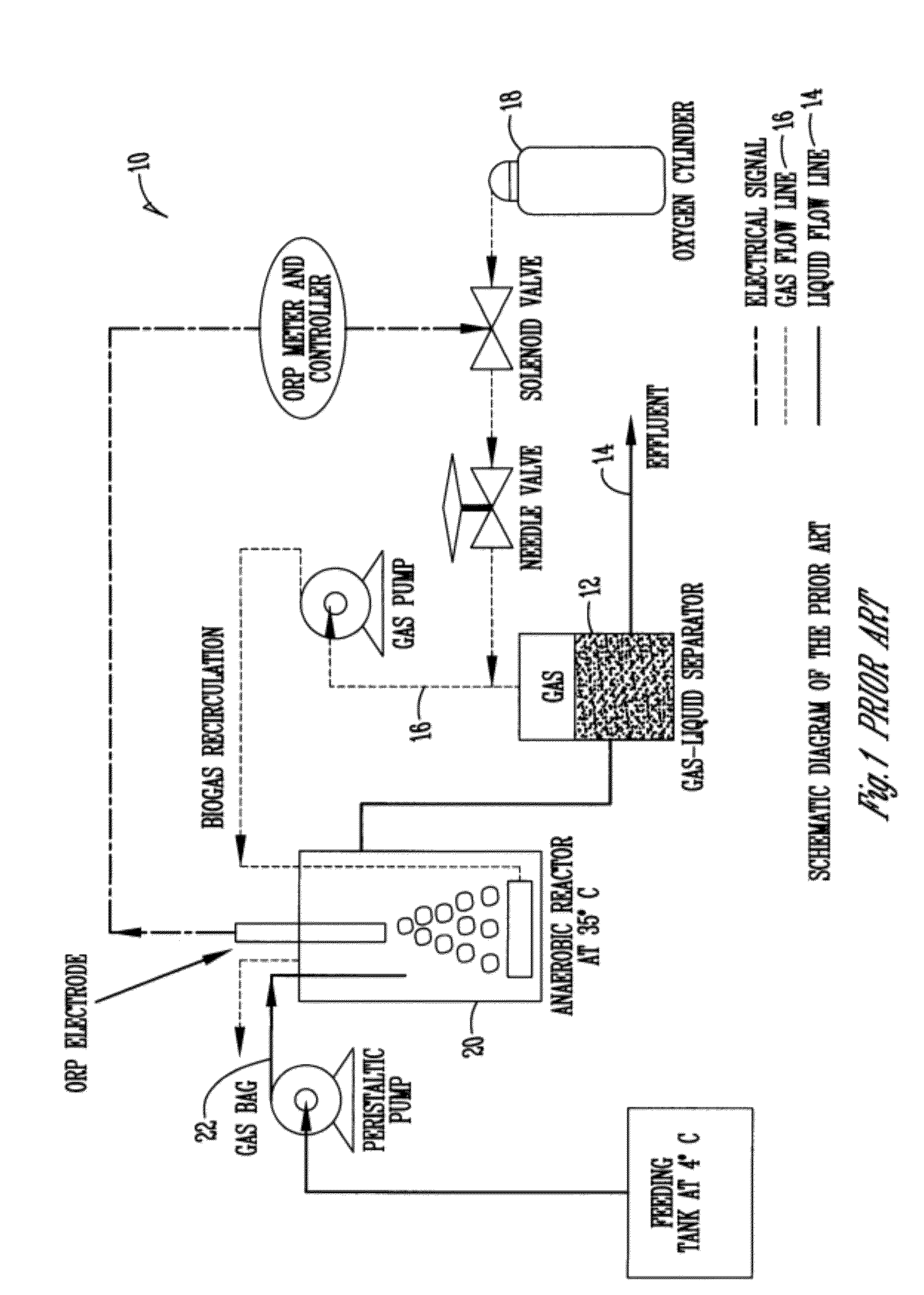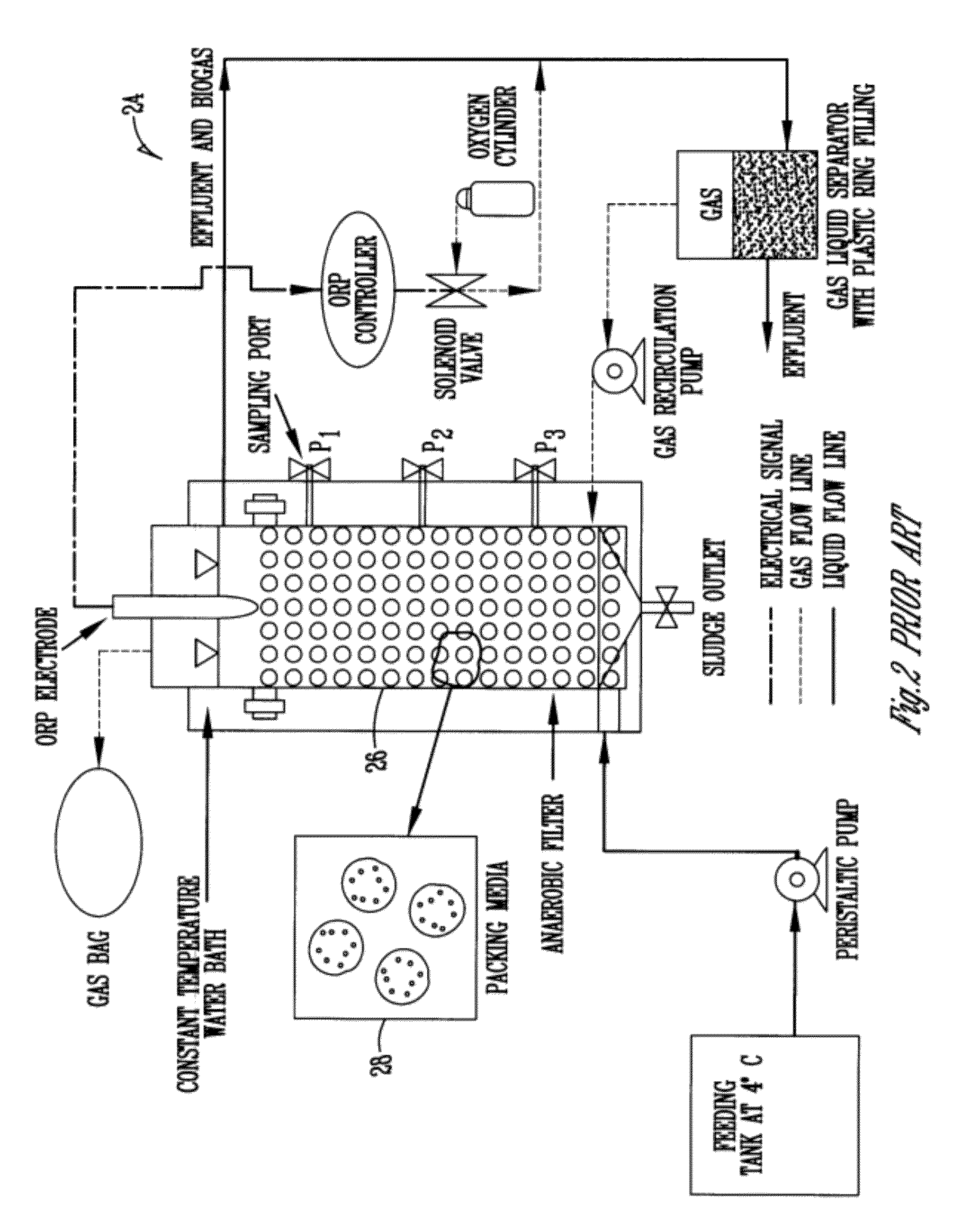Micro-aeration of sulfide removal from biogas
a technology of biogas and sulfide, which is applied in the field of removal of sulfide, can solve the problems of reducing the yield of methane, reducing the quality of methane as a renewable energy, and not only causing harm
- Summary
- Abstract
- Description
- Claims
- Application Information
AI Technical Summary
Benefits of technology
Problems solved by technology
Method used
Image
Examples
example 1
Preferred Sulfide Removal Apparatus
[0053]A preferred apparatus of the invention is illustrated in FIG. 3. The set-up mainly consists of two gas recirculation loops (FIG. 3). In the first loop, sulfide-laden biogas 32 bubbles at the rate of 0.05 to 5 L-biogas / Lcolumn-min through a long slender column (SOU—Sulfide Oxidizing Unit) containing liquids. In the second loop, sulfide-free biogas 33 from SOU bubbles through the sulfide producing bioreactor at the rate of 0.0015 to 0.15 L-biogas / Lbioreactor-min. The two loops are connected to each other as shown in FIG. 3.
[0054]The SOU consists of a diffuser 40 at the bottom with liquid and / or gas inlets and / or outlets along the column wall. A small chamber is located at the bottom of the SOU below the diffuser to collect elemental sulfur 52, as well as other particulate matters. The column is also equipped with air / oxygen injection 54 and monitoring unit to inject air / oxygen at the rate of 0.1 to 50% of the amount of biogas that is normally p...
example 2
A Pilot-Scale Study of Micro-Aeration for Sulfide Removal in Anaerobic Treatment of High-Solid Wastewater
[0061]The pilot-scale facility consisted of a one-liter sulfide oxidizing unit (SOU) integrated with an anaerobic digester, a continuous stirred tank reactor (CSTR) with an internal settling zone with a working volume of 92 L. The effluent from the digester was pumped out of the system into the SOU to provide medium for sulfide removal.
[0062]Sulfide-laden biogas produced in the digester was mixed with small amount of air before being forced through a diffuser located at the bottom of the SOU. In the SOU, sulfide and oxygen flowed upward in a countercurrent direction against the digester effluent, where the formation of elemental sulfur took place. The elemental sulfur produced was collected in the bottom of the SOU and discharged periodically. Sulfide-free biogas was re-circulated back to the digester to scavenge the newly formed sulfide and brought back to SOU again. The cycle w...
PUM
| Property | Measurement | Unit |
|---|---|---|
| height | aaaaa | aaaaa |
| air flow rate | aaaaa | aaaaa |
| height | aaaaa | aaaaa |
Abstract
Description
Claims
Application Information
 Login to View More
Login to View More - R&D
- Intellectual Property
- Life Sciences
- Materials
- Tech Scout
- Unparalleled Data Quality
- Higher Quality Content
- 60% Fewer Hallucinations
Browse by: Latest US Patents, China's latest patents, Technical Efficacy Thesaurus, Application Domain, Technology Topic, Popular Technical Reports.
© 2025 PatSnap. All rights reserved.Legal|Privacy policy|Modern Slavery Act Transparency Statement|Sitemap|About US| Contact US: help@patsnap.com



